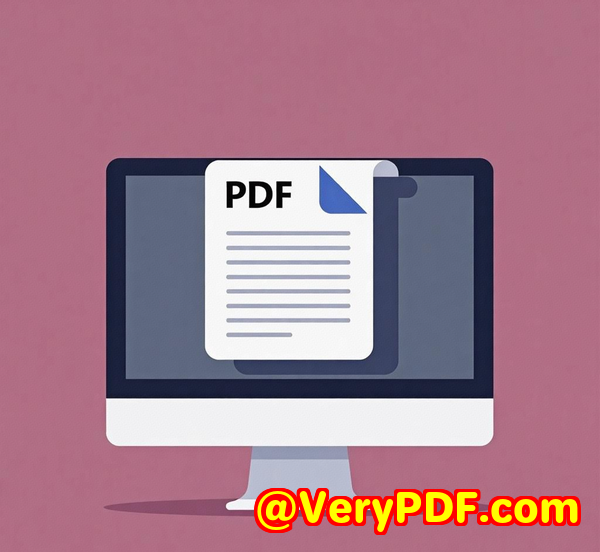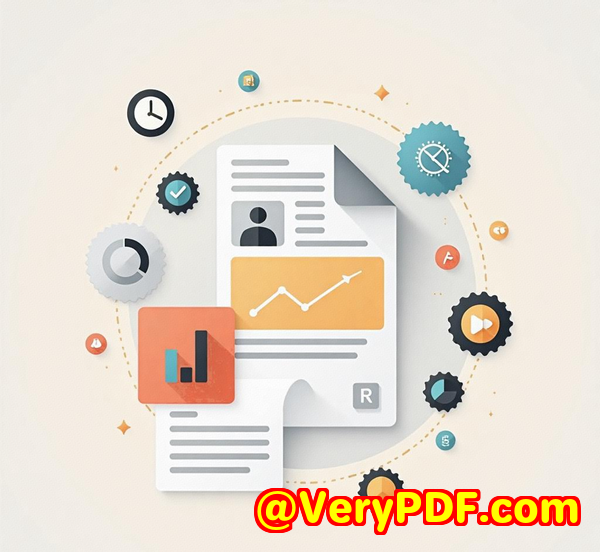Achieving PDFA Compliance for Long-Term Storage Why VeryDOC SDK is the Best Option
Title: Achieving PDF/A Compliance for Long-Term Storage: Why VeryDOC SDK is the Best Option
Meta Description: Discover how VeryDOC PDF to PDF/A Converter SDK ensures PDF/A compliance for long-term storage, with key features and personal experience.

Opening Paragraph (Engagement)
When managing vast amounts of archived documents, especially in industries like law, finance, or government, the challenge of ensuring long-term accessibility and readability is real. How many times have you been stuck trying to locate a PDF from years ago, only to find that it's no longer displaying correctly or can't be opened at all? It's frustrating, right?
This is where PDF/A compliance becomes essential. PDF/A is an ISO standard designed for long-term archiving of electronic documents, ensuring they remain accessible and display correctly over time, regardless of the software or hardware used. But getting your files into PDF/A format isn't always straightforward. That's where VeryDOC PDF to PDF/A Converter Command Line SDK comes inan incredibly powerful tool that solves this problem efficiently.
Body (Product Solution + Personal Experience)
Discovering VeryDOC PDF to PDF/A Converter
As a developer, I've worked with numerous tools to convert PDFs for archiving. However, I always felt that the conversion process either stripped away crucial elements or was overly complicated. That was until I discovered VeryDOC PDF to PDF/A Converter SDK.
This tool is designed to handle PDF/A compliance conversions flawlessly, and the results? They speak for themselves. Whether you're converting scanned PDFs or regular PDF documents, this SDK takes care of everything you need for PDF/A compliance.
Product Features Overview
VeryDOC PDF to PDF/A Converter SDK works by converting your regular PDFs into PDF/A-1b documents that are fully compliant with ISO 19005-1 archiving standards. Here's what makes this tool stand out:
-
Full ISO Compliance: It creates fully compliant PDF/A documents, ensuring they meet the requirements for long-term storage.
-
Handles Password Protected PDFs: You can convert password-protected PDFs to PDF/A without any issues.
-
Color Space Conversion: It replaces device-specific color spaces with ICC profiles, ensuring consistent colour output for future access.
-
Font Embedding: It embeds and subsets fonts, ensuring that your document looks the same every time it's opened, regardless of the device.
-
Removal of Forbidden Content: It removes non-compliant elements like JavaScript and interactive formssomething other tools often miss.
-
Metadata Management: If your PDF lacks proper metadata, this tool adds it, ensuring that the document is fully compliant.
Why This SDK is a Game-Changer for Developers
For me, one of the key benefits of using the VeryDOC PDF to PDF/A Converter Command Line SDK is its versatility. It can be seamlessly integrated into scripts and automated workflows. For example, I needed to batch process hundreds of documents in a short period. I created a script that automatically converted all my PDFs to PDF/A format in just a few minutes. I didn't have to worry about fonts not embedding correctly or color discrepancieseverything was taken care of by the SDK.
In one instance, I was working with a client who needed to convert a large set of scanned PDF files into PDF/A for long-term storage. Using this tool, I was able to convert these files without compromising the quality or accessibility of the documents. The tool also worked flawlessly with password-protected files, a challenge that many tools fail to address.
Comparisons to Other Tools
Let's be honest: many tools claim to handle PDF/A conversion, but they often fall short when it comes to keeping everything intact. Some don't embed fonts properly, others can't handle password protection, and some even leave out crucial metadata that is necessary for compliance.
VeryDOC PDF to PDF/A Converter stands out because it:
-
Fully Supports Password-Protected PDFs: Many converters struggle with password-protected files, but this SDK handles them without a hitch.
-
Ensures Full Compliance with ISO Standards: Unlike other tools, this SDK ensures that your PDFs are fully compliant with PDF/A-1b, which is critical for long-term storage.
-
Better Font Management: Embedding and subsetting fonts are key features that prevent documents from displaying incorrectly when opened on different systems.
-
Automatic Metadata Addition: If your PDFs lack the right metadata, this SDK can add it automatically, ensuring compliance.
Core Advantages of VeryDOC SDK
What really sets the VeryDOC PDF to PDF/A Converter SDK apart are the core advantages it offers:
-
Automation and Batch Conversion: The command-line interface is perfect for automating processes. This means you can convert large batches of documents without needing to interact with them manually.
-
Security: It supports encrypted files, so you don't have to worry about running into issues with password-protected documents.
-
Flexibility: It allows you to configure various output options, such as the color space (RGB, CMYK, or grayscale), making it suitable for a wide range of industries.
-
Reliability: Once set up, the tool runs without any issues, providing consistent results every time.
Conclusion (Summary + Recommendation)
In summary, if you're dealing with a large volume of documents and need to convert them to PDF/A format for archiving, VeryDOC PDF to PDF/A Converter Command Line SDK is the solution you've been looking for. It's easy to integrate into your workflow, ensures full compliance with ISO standards, and offers the flexibility and security you need to handle even the most complex PDF files.
I highly recommend this tool to any developer or organization that needs to ensure the long-term storage of PDF documents. It's a reliable and efficient way to ensure your PDFs are compliant with PDF/A standards, and it will save you countless hours of manual work.
Start your free trial now and experience the efficiency for yourself: VeryDOC PDF to PDF/A Converter SDK.
Custom Development Services by VeryDOC
At VeryDOC, we don't just provide off-the-shelf solutionswe offer custom development services tailored to your specific needs. Whether you're working with complex PDF workflows or need a custom solution for document conversion, our team has the expertise to deliver the perfect solution. We specialize in:
-
Developing solutions based on Python, PHP, C/C++, .NET, JavaScript, and more.
-
Creating custom printers for generating PDFs and images.
-
Building tools for OCR, barcode recognition, and document analysis.
-
Crafting bespoke solutions for document security, including PDF encryption, digital signatures, and DRM protection.
If you need a custom solution, don't hesitate to reach out to us through our support centre.
FAQ
1. What is PDF/A and why is it important?
PDF/A is an ISO standard designed for the long-term archiving of electronic documents. It ensures that the document can be opened and read in the same way over time, regardless of the system or software used.
2. Can I use the VeryDOC PDF to PDF/A Converter for password-protected PDFs?
Yes, the SDK supports converting password-protected PDFs to PDF/A without any issues.
3. What platforms does the VeryDOC PDF to PDF/A Converter SDK support?
It supports Windows platforms, including 32-bit and 64-bit versions of Windows 2000, XP, Vista, and later versions.
4. Is the VeryDOC PDF to PDF/A Converter SDK suitable for batch processing?
Absolutely! The SDK supports batch conversion, making it ideal for processing large volumes of documents automatically.
5. Can I customize the color profile in the PDF/A conversion process?
Yes, you can select from several color profiles, including RGB, CMYK, and grayscale, during the conversion process.
Tags or Keywords
-
PDF to PDF/A Conversion
-
PDF/A Compliance
-
PDF/A Converter SDK
-
ISO 19005-1 Archiving
-
Document Archiving Solutions



